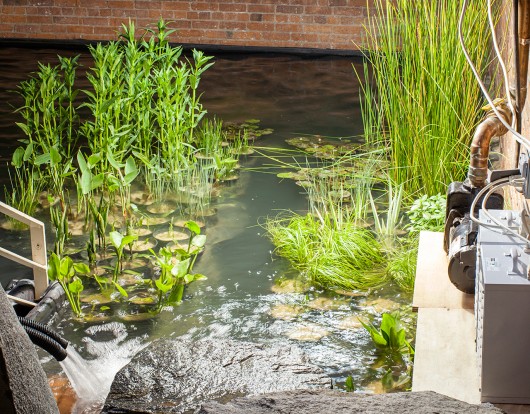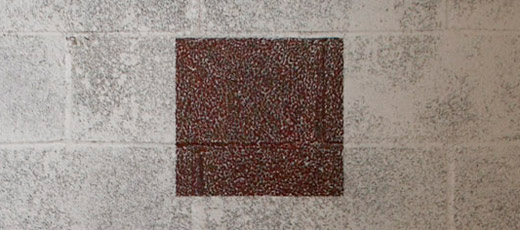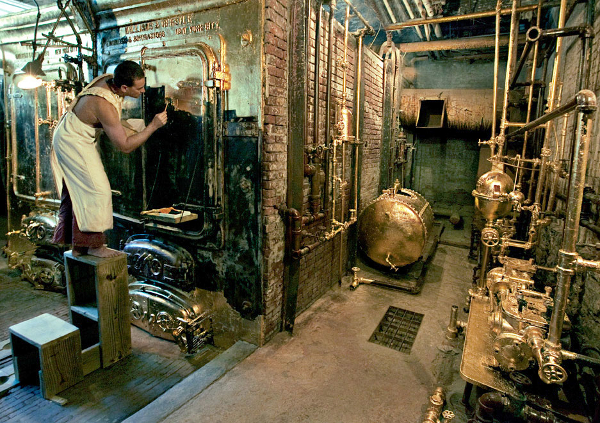MoMA PS1 is a satellite institution of the Museum of Modern Art (MoMA) in Long Island City. PS1’s mission is to “display the most experimental art in the world”.
Many things about it are boundary pushing. It does not glisten near the “plastic” likes of Time Square. It unassumingly melds into the grimy street environment of Queens. It does not posses its work. It merely provides a space for work to be experienced. The work is not obvious like the sensory overload of a room adorned by Mattisse, Picasso and Degas. It is deeper with subtle nuance and lasting impression. The artistry is not about the perfect brush stroke, impeccable implementation of color theory, or hours of technical craftsmanship. The artistry is about the concept and the process of creation. PS1 is a place to experience the spectrum of values that art has to offer. PS1 moves art from mere object to dense subject.
The current exhibit Expo1 at PS1 includes several installations that push subject over object.
Art is paradoxical:
Upon entering the re-purposed school building that houses PS1, one instantly notices the sound of water. It is not a trickle of water, and it is not a torrent of water. It is the recognizable sound of a stream of water falling into a pool. It is unexpected, yet oddly rhythmic and extremely compelling. In short order one passes by the source. Meg Webster in her work, “Pool,” has turned an interior room into a pond oasis! The mini-ecosytem is complete with three feet of water koi, rock, moss and vegetation. It is the outside world brought inside. The paradox is aesthetically pleasing. More importantly, the paradox gives us new perspective. The man-made natural setting in the man-made architectural setting forces us to see nature. It unabashedly shows how beautiful nature is, and compels us to take note on our next stroll through the woods. “Art” — as we commonly understand it — does not alone own beauty.

MEG WEBSTER. POOL. 1998/2013. INSTALLATION VIEW OF EXPO 1: NEW YORK AT MOMA PS1. PHOTO: MATTHEW SEPTIMUS. http://www.MoMA PS1.org
Art is process:
There is no space that art cannot be experienced. The boiler room in the basement of PS1 houses several works of art. Part of Saul Melman’s work, “Central Governor,” is immediate upon entry. He has enshrined parts of the behemoth boiler with gold! It screams for the attention it deserves. Soot turned to masterpiece. Nearby in a small alcove is a piece even more compelling. A one-foot-square shape colored by crayon. It is so simple it is overlooked. Sol Lewitt conceived Crayola Square. Yes the object is extremely trite. Anyone with a kindergarten education could complete it assuming they passed the test to color within the lines. But the object is not the focal point. If one read the statement near the work they would find discrete detailed instructions for the creation of the work. The art is the implementation of the strict instructions for the square. The art IS the process.

Sol LeWitt. Crayola Square. 1999. Photo by Matthew Septimus. Courtesy P.S.1 Contemporary Art Center. http://www.MoMA PS1.org
Art is simple:
The top floor of the warehouse is the administrative area of the institution. It is easy to just forgo the trip up the final flights of stairs to see the few works displayed there. It would be just as easy to pass by the imperfection in the bricks about 10 feet off the floor. This is a refurbished warehouse after all and shabby chic is part of the experience. However, if one stops and explores the small crater in the wall, one will see the light. Alan Saret’s work “The Hole at PS1 Fifth Solar Chthonoic Wall Temple” is merely a hole through the east facing exterior wall of the institution. The beautiful beam of light that shines through is like a delicate laser. It feels like the divine peeking at you, smiling, and telling you that all is right in this moment. And it is. A hole in a wall letting the abundance of the sky be felt is art and it is simple.
PS1 is not a typical museum filled with objects of awe and wonder. PS1 is much more. It is filled with beautiful things, repugnant things, unexpected things, and simple things. But the things are not the end. The end is what the things bring out in you. The end is your new perspective on life and new revelations about the world in which you live that life. The end is not the object, but the subject.



This is a lovely recollection of PS1 and matches my experiences of the place, even though I was there at different times and therefore saw different exhibits. While other museums awe and overwhelm my senses, I’ve always found PS1 to be a very thoughtful, engaging place.
Beautifully done, Scott. Are there any venues or projects in Baltimore that you think embody the same spirit, or any opportunities you think we might be missing?